Iranian President Meets With Convicted Terror Suspect
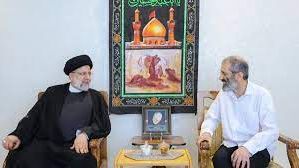
Iran's President Ebrahim Raisi has met with convicted terrorist Assadollah Assadi, who was released from Belgium in May in exchange for a Belgian hostage in Tehran.

Iran's President Ebrahim Raisi has met with convicted terrorist Assadollah Assadi, who was released from Belgium in May in exchange for a Belgian hostage in Tehran.
A court in Belgium had sentenced Assadi to a 20-year prison term after being found guilty of involvement in a plot to orchestrate an attack on an Iranian opposition event in 2018 near Paris. However, he was released from prison and returned to Iran on May 26 as part of a mediated exchange carried out with the assistance of Oman.
In return for Assadi's release, Iran released Belgian aid worker Olivier Vandecasteele, who had been incarcerated in Tehran for nearly 15 months.
Despite the long trial in Belgium that led to Assadi's conviction, Iran claimed that he was innocent and treated him as a hero upon his return. Assadi was a diplomat in Iran's embassy in Austria and according to evidence submitted during his trial, he used his diplomatic status as a cover to organize the bomb plot.
The president's office reported on Saturday that during the meeting on Friday, President Raisi said, "The proponents of human rights have once again demonstrated their disregard for established legal frameworks." He further claimed that these countries “had violated international norms and principles” by undermining the diplomatic immunity of the Iranian diplomat.
The prisoner exchange marked the culmination of extensive political debates in Belgium, particularly within the nation's parliament. In January, Vandecasteele, aged 42, had been sentenced to 40 years in prison and 74 lashes on charges of "espionage," a verdict that both his family and Belgian authorities criticized as "unfair."
Since May, Oman-mediated negotiations have led to the release of six European citizens held in Iran, while several are still held hostage.

Hardliners hold such a strong sway within Iran's regime that media discuss their intentions to seize control of the political system for the upcoming decade.
They have almost been in total control of the presidential administration since 2021, while also holding the majority of seats in the parliament (Majles) following the controversial elections of 2020, when no moderate or reformist regime loyalists were allowed to run.
The ultraconservatives' near-monopoly of power is already strong enough so that traditional conservatives such as the elderly members of the Islamic Coalition Party find it hard to consider themselves as players in the upcoming parliamentary election in March.
In a report this week, Khabar Online website described the pre-election ultraconservatives move of the hardliners as "the radicals' onslaught against the conservative camp," and wrote that it is part of a political purification process taking place. The term purification was coined by moderate conservative politician Ali Larijani to describe the ultraconservative's attempt to create their monopoly of power in Iran.
While different conservative factions are fighting over the pie, most politicians and analysts expect a very low voter turnout in March. People are disillusioned with all politicians of the Islamic Republic amid a serious economic crisis and the brutal crackdown during recent protests.
Khabar Online explained the political scene ahead of the elections as a confrontation between the ultraconservatives on the one hand and other factions in the conservative camp. Larijani, a traditional conservative who has always been loyal to Supreme Leader Ali Khamenei has been the victim of the purification process.

The main battle, according to Khabar Online, will take place between the members of the ultraconservative Paydari Party and the neo-cons around Majles Speaker Mohammad Bagher Ghalibaf. The former, wishes to turn the Iranian government into a totalitarian religious regime and the latter advocates the idea of a military dictatorship.
Paydari, as the advocate of a religious state based on the ideas of late Ayatollah Mohammad Taqi Mesbah Yazdi wishes a political brand of Shiite Islam to rule in Iran. The regime they have in mind does not get its legitimacy from the people. Mesbah Yazdi had said openly that the people and their votes should have no part in running the affairs of the state. He argued that democracy was created for the West. In his ideology the true ruler of the country is God who directly appoints the supreme leader as his representative on earth.
According to Khabar Online, the Paydari Party's plan is to hold all the three branches of the government as well as all other institutions in the country in its hands based on a 10-year project.
The neo-cons, on the other hand, are a group of technocrats with a background in the Revolutionary Guard (IRGC) or the academia, like Ghalibaf himself who has both academic and military credentials. They follow the idea of a "New Governance" the outlines of which have never been laid out at least publicly. They are the left wing of "other conservatives" as opposed to their right wing where seasoned politicians such as Larijani and Ali Akbar Nateq Nouri are active as potential kingmakers in the next election.
Traditional conservatives, who are mainly the members of the Islamic Coalition Party, which played a major role in the 1979 Islamic revolution, struggle to find their place in the competitions to win at least half a dozen seats in the Majles. Their Leader, Assadollah Badamchian, said in an interview with Rouydad24 website that "The upcoming election is going to be eventful as there are multiple conservative parties involved in the competition."
It is interesting that neither Paydar members, nor Ghalibaf's camp or Badamchian talk about moderates and reformists as contestants. It seems they are certain to be the only runners.
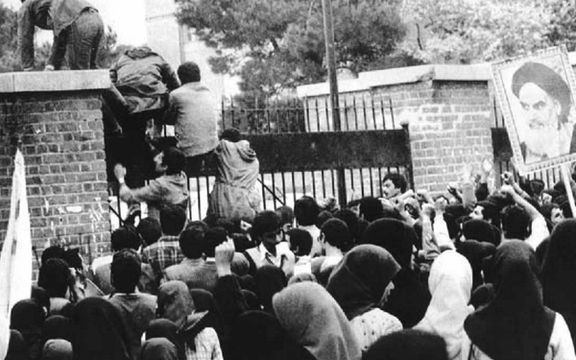
A former IRGC general says the revolutionary guards knew about the plans to seize the US Embassy in Tehran two days before the attack on the compound in 1979.
Mohsen Rafighdoost was in charge of the Revolutionary Guard's Logistics when he says he was told that a group of students were going to storm the US embassy in Tehran in November 1979, some 10 months after the Islamic revolution that ousted Shah Mohammad Reza Pahlavi.
Rafighdoost told Didban Iran website in Tehran Thursday that the IRGC had a part in "organizing the attack on the US Embassy,” and added, "Along with Mohsen Rezaei, who was in charge of the IRGC's Intelligence Unit, I went to a briefing session. Mohsen Mirdamadi, [one of the student leaders] and Hassan Lahouti who was in charge of the Islamic Revolution Committees [a militia organization that did the job of the police, which was disbanded after the revolution] were also present at the meeting."
The statement made by Rafighdoost effectively refuted the claim that the attack on the embassy was a revolutionary attempt by students with no link to the government. Rafighdoost's next comment is truly incriminating: "I was told at the meeting that I was required to help the takeover of the embassy. Subsequently I put some facilities at the students' disposal."
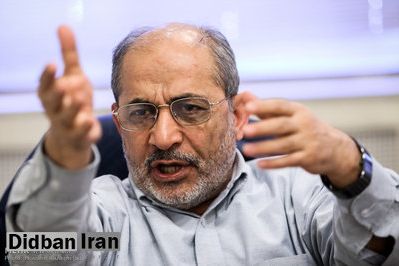
This reveals that the IRGC was involved in planning, organizing and providing the logistics for the attack on the embassy. The students stormed the embassy and took 54 US diplomats hostage for 444 days, demanding, among other things, that the Shah of Iran who was being treated for terminal cancer in the United States be handed over to the revolutionary government in Tehran for a trial that would have most certainly led to his execution, judging by how the new regime treated the Shah's generals, ministers and many others.
Rafighdoost, who was a pedlar at the Tehran fruit market before the revolution, was the man who drove Ayatollah Rouhollah Khomeini from the Tehran airport to Behesht-e Zahra cemetery where he gave his famous speech during which he promised that free transportation, electricity, water and gas would be provided to the nation. A promise that was never kept.
His reward for the service was the job at the IRGC, which he kept for two years, before he was appointed as the Minister of IRGC [1982-1988] without any education and military background. He was equally unqualified when he later became the head of Mostazafan Foundation [Foundation for the oppressed], which had just confiscated billions of dollars of the nation's wealth without any checks and balances. He is now back to the bazaar once again, albeit as a tycoon. However, he maintains his position as one of the trustees of the foundation.
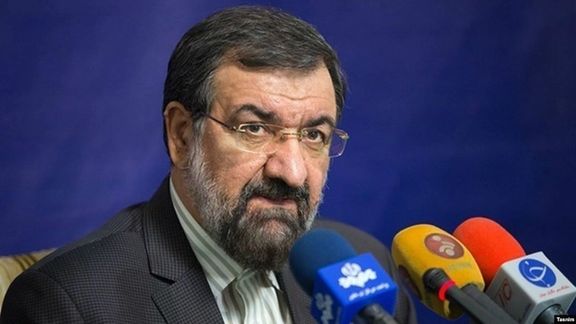
As regards others at the meeting, Mohsen Rezaei was appointed the commander in chief of the IRGC, again with minimal educational background and absolutely no military training. Mohsen Mirdamadi later became a lawmaker and a deputy speaker of the parliament who is currently alienated from the government for leading a mutiny at the parliament in the 2004 against Khamenei’s despotic rule. Lahouti, a cleric who had spent most of his life in jail under the Shah, was killed in prison according to his family members, but the government claims that he committed suicide after he was arrested and jailed for his son's membership at the opposition Mojahedin-e Khalq Organization.
During the time the students held US diplomats hostage, they published a series of often fabricated documents to tarnish the image of Khomeini’s critics and political rivals. Iran’s current ruler Ali Khamenei has repeatedly called for including the contents of those "documents" in school textbooks. When Iran finally released the hostages in January 1981, the hostage-takers were given important posts at the Foreign Ministry [Hossein Sheikholeslam], the Police [Police Chief Reza Saifollahi] and other government ministries. Dozens of them became lawmakers (2000-2004) under the reformist government of Mohammad Khatami.
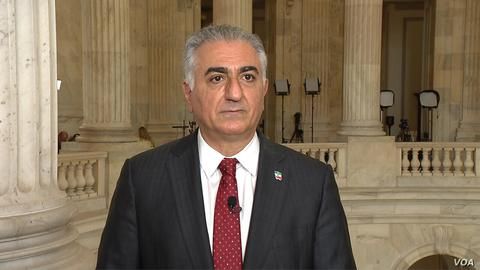
Iran's exiled Prince Reza Pahlavi has strongly condemned the recent decision by the Biden administration to release billions of dollars to the Iranian regime.
Through a statement posted on the X platform (formerly Twitter), Pahlavi expressed his concern over the dire situation faced by the Iranian people due to the corrupt practices and "criminal incompetence" of the Islamic Republic.
He emphasized that the people of Iran are being denied the benefits of their country's abundant natural resources, leading to their ongoing suffering.
Pahlavi remarked, "Unfortunately, the reported billions of dollars that the Biden administration plans to release to the regime as part of a ransom for five hostages will not alleviate the hardships experienced by my fellow countrymen."
Alongside his message, he shared a graph prepared by the National Union for Democracy in Iran, which highlighted the potential uses of the $6 billion released to the regime.
The graph indicated that with this funding, the regime could acquire 316 million tear gas canisters, 60 million batons, 18 million shotguns, and a staggering 12 billion bullets, ostensibly for suppressing protesters.
Pahlavi's message continued, "This windfall will only serve to fuel the regime's illicit activities, providing further incentive for its hostage-taking and blackmailing tactics, akin to previous ransom payments."
Pahlavi pointed out the distressing timing of this financial infusion, which coincides with the anniversary of the tragic death of Mahsa Amini and numerous other courageous Iranians. He referred to the situation as an additional, painful insult to the memory of those who have suffered under the regime's rule.

A conservative Iranian newspaper has issued a warning about potential security repercussions due to the increasing influx of Afghan and other migrants into Iran.
The editorial in Jomhuriye Eslami (Isalmic Republic) daily highlights the urgency for political leaders and intelligence officials to address the escalating issue of "foreign national" entering the country.
The term foreign nationals was used to describe those involved in the attack on the Shahcheragh shrine in Shiraz August 13, calling for the attention of political and security authorities, added the daily.
The editorial notes that while the primary perpetrator holds Tajik citizenship, other detainees have different nationalities, prompting reflection on the presence of foreign nationals in Iran and the mounting adverse effects in society. Afghans are the largest group of migrants arriving in Iran by thousands daily.
The article emphasized the need “to uphold legal frameworks and rigorous oversight concerning foreign nationals' presence.” Key considerations include robust monitoring to prevent criminal activities, which significantly impact national security, the daily noted.
Drawing insights from recent events, the article underscored several points. It questioned how foreign nationals conducted an attack exposing a lack of oversight that raises concerns about more serious future crimes. It also highlighted the risk of adversaries using foreign nationals to destabilize Iran.
Meanwhile, former chairman of Iran's national security and foreign policy committee, Heshmatollah Falahatpisheh, underscores the potential security challenge of Afghan migrants. With approximately 10,000 arriving daily, Falahatpisheh highlights potential systemic facilitation and the need for robust oversight.
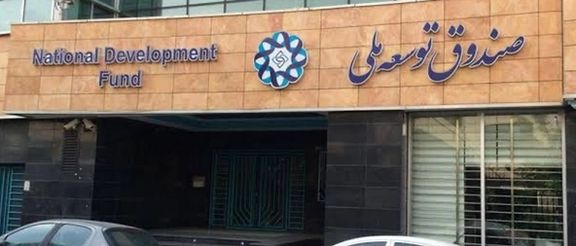
Intriguing figures released this week in Iran reveal that over the past decade the government has spent more than $100 billion from the national reserve fund.
Local media reported the disclosure by the Iranian parliament’s research center on Friday, illustrating that as stringent international sanctions struck Iran during 2011-2012, the administration of former president Mahmoud Ahmadinejad initiated withdrawals from the National Development Fund (NDF).
The NDF, designed to save up to 30 percent of oil revenues for future generations, saw withdrawals totaling $13.6 billion from 2010-2013, a period when global oil prices remained above $100 per barrel. Nonetheless, during Ahmadinejad's tenure, more funds were retained in the NDF than withdrawn.
The UN-imposed international sanctions, as well most US and EU economic sanctions ended in mid-2015 when Iran and the world powers concluded the Joint Comprehensive Plan of Actions (JCPOA) nuclear accord, curbing Iran’s nuclear program in exchange for removing most sanctions.
Despite this, withdrawals persisted throughout President Hassan Rouhani's two terms (2013-2021). In his initial presidential tenure, $30 billion was withdrawn. However, as former US President Donald Trump withdrew from the JCPOA and imposed crippling sanctions, Iran increasingly relied on its reserves, resulting in a negative cash flow in the NDF.
During Rouhani’s second term (2107-2021) the government withdrew $37 billion, to maintain fiscal stability. contravening the NDF charter that bars using it for day-to-day government operations. Such withdrawals required Supreme Leader Ali Khamenei's approval, who reluctantly endorsed the JCPOA but refused further nuclear concessions or negotiations over US demands.
In the third annual gathering of officials to discuss the NDF, the chairman of the National General Inspection Organization, Zabiollah Khodayan also cited the $100 billion figure in withdrawals but he also stated that successive governments "borrowed" another $40 billion from the fund, leaving a fraction of the original $150 billion.
The Trump administration's contentious decision to exit the JCPOA aimed to pressure Iran into curtailing its ballistic missile program and halting its destabilizing activities in the Middle East. During this period, Iran's involvement in conflicts in Syria and Yemen intensified, while it also organized Shiite proxy forces in Iraq and other regions.
The pace of withdrawing funds from the NDF accelerated further under the hardliner president Ebrahim Raisi’s first 18 months in office starting from August 2021. Not only US sanctions continued to impede Iran’s oil revenues and commerce, but the new administration came to be quickly labeled as incapable of managing the economy.
According to Parliament’s research center, in this period Raisi’s government withdrew $20 billion, which by now could have easily exceeded $25 billion.
President Joe Biden’s administration began nuclear talks with Tehran in April 2021, but as Raisi became president, hardliners procrastinated in making a deal to revive the JCPOA. With Russia’s invasion of Ukraine, the talks came to an end in March 2022, and a final compromise plan by the European Union failed to achieve success in August of that year.
Based on the disclosed figures, during Ahmadinejad’s second term (2009-2013) the pace of withdrawals from NDF was $453 million a month. During Rouhani’s two terms in office it accelerated to $700 million and in the Raisi administration it has reached $1.12 billion a month.
This shows the initial calculation in 2018 that US sanctions alone could put Iran’s economy under tremendous pressure was correct, although with the coming of the Biden administration, Khamenei continued to refuse any compromise, while Iran succeeded in exporting more oil despite the sanctions.
It also accelerated its nuclear program as talks began in early 2021 and increased uranium enrichment first to 20 percent and quickly expanded to 60-percent. Now, Tehran is essentially a nuclear threshold power and has enough fissile material to build at least two nuclear bombs.